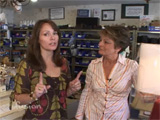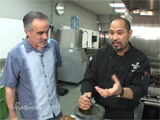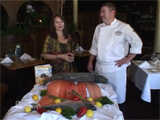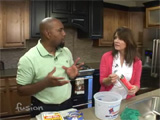EPISODE #10 -
SATURDAY JUNE 6, 2009
Wow, the rain has returned! It is tough to get out and
tackle those outdoor projects with the weather so cold and
wet. It might be time to get back indoors and tackle some
of the inside projects that need to be done, like painting!
In this week’s show we look at the supplies you need to take
on those inside painting jobs. That is just one thing you
can do, check out some of our other ideas…
Shady Looks
Your
indoor lamps are one of the most overlooked décor items in
your house. As you paint and decorate you just move them
from one room to another and miss the decorating
possibilities that they offer. To help give you some ideas
we traveled to
Naomi’s Lampshades (503-636-1884) in Lake Grove. Bea
Searles is the owner and she brought out a couple of lamps
to demonstrate. She made a quick change to one lamp that
gave it a fresh new look. But the problem was the height of
the new shade; it was sitting too low on the lamp so all she
did was change the ‘harp’. The harp is the metal loop that
goes around the light bulb to protect it and creates the
structure to attach the shade to. The fitting of the harp
is very important when changing the shade. Bea recommends
that you bring your lamp into the store when you are looking
for a new shade so you can see how the shade fits. You can
even change the look by changing the finial which is the
part at the top of the lamp. For more tips you can check
out their website, or visit them on Boones Ferry Road in the
Lake Grove/Lake Oswego area.
Cork Issues
We return to
Vinotopia (877-608-2800) in Vancouver to chat with Rudyard
Coltman about corks. You can tell a lot about a wine by the
cork. Rudyard told about some things you should look for in a
cork and how to tell if it affects the wine you will be
drinking. First look to see if the cork is firm. If it is
cracked then the wine may not have been stored correctly.
Leakage around the cork signals too much heat and may mean the
wine has been compromised. You should also smell the cork and
the wine to look for cork rot. If they both smell like a wet
dog or moldy newspapers you may have a wine tainted by cork
rot. To learn more about wines (and corks) you can take one of
the many classes at Vinotopia in Vancouver.
Grind Your Own Spices
One of the
quickest ways to ‘punch’ up your recipes is with fresh spices
and you can create your own tasty spice combinations by
‘cooking’ and grinding your own spices. We met with Chef Vaidya
from the
Oregon Culinary Institute (1-888-OCI-CHEF) who showed Chef
David how easy it is to do. Chef Vaidya picked out 7 different
spices for us to look at. We saw some different spices like
clove, cinnamon, bay leaf and nutmeg. Spices can be anything
that adds flavor to a recipe and can come from different parts
of plants in nature. It can be a leaf, seeds or even bark from
a plant. Chef Vaidya showed us how to use a stove-top pan to
heat the spices. The heat releases the volatile oils from the
spice and creates a more intense flavor. After heating he
ground the spices in a mortar and pestle. This also helps
release the flavor and mixes the spices into different
combinations. You can store these spice mixes up to 6 months.
If you are interested in taking some cooking classes and
learning more, check out the Oregon Culinary website.
Enchilada Sauce
Chef David
returns to the kitchen to share another recipe that uses our
basic tomato sauce that we prepared a few weeks ago (check out
the Tomato sauce recipe here). We started by tearing up,
removing the seeds and soaking some New Mexico chilies.
Remember when you are working with chilies, peppers or other
spicy foods to wear gloves or wash your hands. You don’t want
the oils to get into your eyes by accident. This recipe also
uses white onion, garlic, and some chicken stock. You start by
sweating down the onions (cooking out the moisture) then we add
the garlic, the chicken stock and the tomato sauce. After a few
minutes the peppers are added and once they are allowed to
simmer you can blend and strain the mixture to get a great sauce
that you can use on chicken or cheese enchiladas.
For the full recipe you
can check it out here.
Salmon Types
It is salmon
season! You may have noticed that a lot of restaurants are
featuring salmon on their menus, but what are the different
types of salmon and how can you tell a good piece of salmon from
a bad one. To learn the answers to that question we stopped by
McCormick and Schmick's to chat with Chef Ryan Smith. The
different types include King, Sockeye, Coho and the Keta
salmon. There is also the Pink salmon but it is mainly for
canning and is not in season right now. The difference in the
color and flavor of the salmon is based on the fat content and
the environment in which it grew up in. We found out that
Alaska salmon is so good because the fish are in colder water.
The colder water makes them carry more fat and that makes them
more flavorful. But don’t worry this is a good fat. It is a
‘heart friendly’ fat that is packed with omega-3 oils and
anti-oxidants. If you are looking for a good grilling salmon,
Chef Ryan prefers the Sockeye, but all of the species hold up
well to grilling. The only rule for grilling is to reduce the
heat! You can dry out and ruin a good piece of salmon by
grilling it too long and hot. If you are picking out a piece of
salmon you will look for a fresh ocean smell and good color. A
yellow sheen on the fish means it may have been in the store too
long. To learn some recipes on preparing the salmon you can
check out the McCormack and Schmicks Seafood cookbook (available
at their restaurants) or you can check out the
Alaska
Seafood website and get some great recipes, and get more
information about this sustainable and delicious treat.
Indoor Painting Supplies
If you are
looking to change the paint color in your home, your job will be
a lot easier if you do the right prep work before you get
started. Chris from
Parr Lumber (503-531-7277) pulled together some of the supplies that you will
need to do the job right the first time. First you will need a
drop cloth. This will protect your furniture and your flooring
from paint damage. Next we saw the painting tape. Painting
tape is special because it will protect your edges (and the
paint won’t run) and it is easy to remove and won’t damage the
wall. You will also need a couple of different paint brushes.
There are a lot of different brushes out there and you can pick
from many different styles of brush. Chris recommends a large
bristle brush for big areas (you can use a roller too), and a
smaller brush for painting fine edges and tight corners. You
can also get small disposable foam brushes that will work great
too. He also showed us the ‘Shur-Line’ painting tool. This
gadget will allow you to paint against molding quickly and
easily. You will also need gloves and a paint bucket or tray.
Just these few tools and you are on your way to a quick and easy
job of painting.
![]()
![]()
![]()

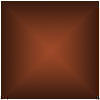
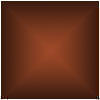
Website design and content ©2009 Gustin Creative Group. Please
send website inquiries to
gustingroup@comcast.net.
This page last modified
February 12, 2011.










